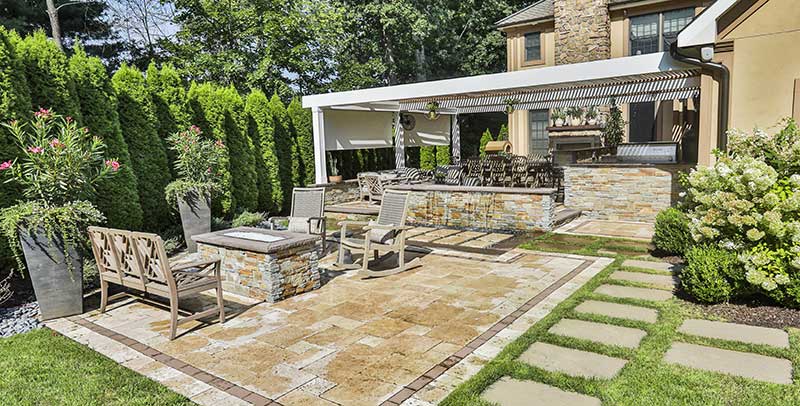Are you thinking about a new outdoor project? Does the addition of a tiered patio or garden walkways make your heart beat faster? What does this have to do with flooding, drainage, and impervious surfaces? A lot!
You want your outdoor landscaping to reduce rainwater runoff. You do this by creating a permeable landscape.
Many states are experiencing a worrisome increase in stormwater flooding and erosion. One of the main causes is land overdevelopment and New Jersey is no exception. This makes impervious vs. pervious surfaces even more critical to property development.
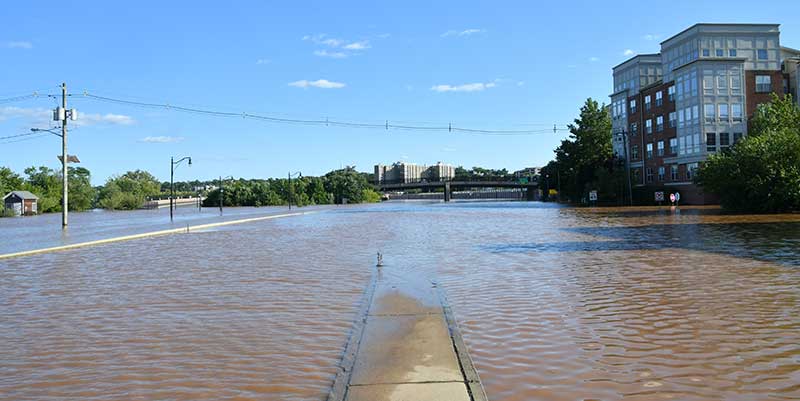
New Jersey Flooding from Tropical Storm Ida Highlights Need for Pervious Land Development
Tropical Storm Ida caused dangerous flooding in many New Jersey counties. As reported in the New Jersey Globe, FEMA declared six counties major disaster areas.
The counties were Bergen, Gloucester, Hunterdon, Middlesex, Passaic, and Somerset. Shortly afterward, FEMA added Essex, Hudson, Mercer, and Union counties to the list. The last county added was Morris County. That made 11 New Jersey counties eligible for emergency federal aid.
Peter Yacobellis, Montclair’s Councilor-at-Large, said, “The flooding is widespread and devastating for the entire town and region. It is heartbreaking to see so much damage to property, possessions destroyed, cars ruined and to think about the environmental impact of all of the chemicals and debris ending up in the water.” This quote illustrates the personal devastation brought on by Tropical Storm Ida.
What Does Increased Flooding Mean for Homeowners?
It shows the undeniable growing importance of using pervious materials for landscaping your property. Pervious materials help prevent flooding and other serious water-related problems.
Impervious materials make flooding worse and do greater damage to the environment.
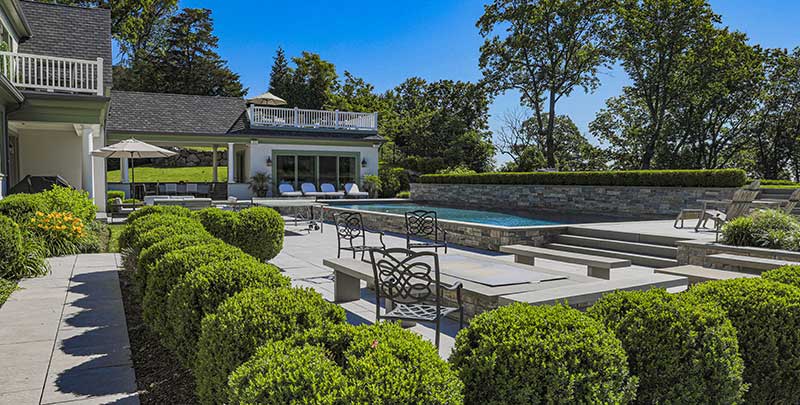
Your Home Is Your Castle—More Than Ever!
Today people are staying home more. Homes now are a place to work as well as rest and celebrate life with family and friends.
Homeowners want to update their outdoor areas with breathtaking landscaping and impressive hardscaping.
At the same time, more homeowners are beginning to recognize the value of using pervious materials to protect their property as well as their town.
What are the benefits of using pervious materials for landscaping?
A lot!
Pervious materials:
- allow water to reach and penetrate the soil and recharge the water table
- decrease the volume and speed of stormwater runoff
- allow for the soil filtration of sediments and pollution
- leave the natural water flow in streams uninterrupted
- keeps waterways clean and safe for wildlife
In short, pervious materials are great for the environment.
They also help homeowners meet Impervious vs. Pervious ratio regulations. Yes, your town most likely has an ordinance for that!

Know Your Municipality Ordinances for Impervious vs. Pervious Material Use
New Jersey State law gives every municipality the power to create its own building and land use laws. We must follow these ordinances; they are not suggestions.
In an earlier blog post, I discussed New Jersey Building Compliance Codes for Landscaping. There I talk about common updates needed during landscaping such as an upgrade to electric power, or gas or water lines.
You must know your townships’ compliance codes before you begin if you don’t want to be fined or create a safety hazard.
If you are planning an update to your outdoor living space, learn your town’s regulations about impervious vs. porous surfaces. Then you can make smart decisions before investing in materials and completing project plans.
Impervious vs. Pervious ordinances are found online. They’re part of your municipality’s Zoning Board publications. Here are some links to get you started in a few New Jersey towns.
- North Caldwell 07006
- Montclair 07042, 07043
- Short Hills 07078
It’s easy to find the Zoning Board for your town. Unfortunately, it may not be so easy to decipher the regulations!
What Homeowners Don’t Know Can Cost Them in Fines
Many landscapers or do-it-yourselfers use or create impervious surfaces for common landscape elements.
Common impervious surface examples include:
- Driveways
- Walkways
- Sidewalks
- Patios
- Pools
- Pool surrounds
- Pavilions
- Gazebos
- Outdoor fireplaces
- Generator pads
- Outdoor kitchens
- Other outdoor structures
Even if you are only adding a small patio, you need to know your town’s regulations before you begin. It’s important to stay within the acceptable pervious to impervious property ratio. If you are using impervious materials and don’t plan, you may run into trouble.
If you have too much impervious surface on your property, you can be fined. And you will most likely need to remove the upgrade at your own cost.

An Impervious Coverage Calculator for Your Property
To stay within your municipality’s impervious surface guidelines, calculate the maximum amount of impervious surface allowed on your lot.
Follow these steps.
1. Find out the percentage of impervious space allowed in your town/municipality. (The Zoning Board provides this information.)
2. Then apply the following formula:
Percentage of impervious space allowed in your town X the total square footage of your lot = the maximum amount of impervious space allowed
You now have the maximum amount of impervious surface coverage allowed for your property.
3. Add the total square footage of your property’s impervious coverage to the square footage of your planned addition. Get the total and make sure this total is less than your maximum amount of allowed impervious space.
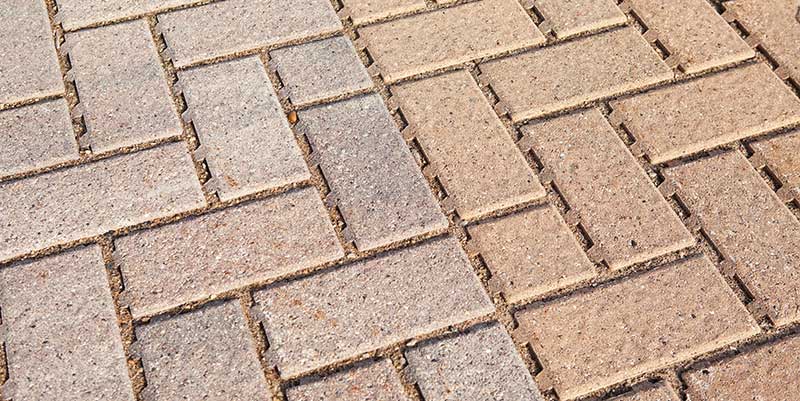
Consider These Products to Reduce Impervious Surface Area
There are many attractive and durable pervious materials. Use them and you will help to keep the environment healthy. And their use will reduce the impervious surface area on your property.
Today, there are many products to choose from. It’s easy to add items like patios or walkways without adding to your property’s impervious surface square footage.
Here are a few.
- Decomposed granite is a popular alternative to concrete. It’s useful for areas such as patios, driveways, and walkways.
- Decking materials such as redwood, cedar and treated pine are durable but porous. Note: They do not consider a deck that rests on an impervious slab to be pervious.
- Flagstone, bluestone, and granite are attractive and porous choices. Stones need to rest on well-drained soil, sand, or gravel. And porous materials must surround the stones.
- Pervious pavers (porous concrete) are excellent replacements for traditional concrete pavers. Someone must install them in a special way and place them on a permeable surface. We use these in many areas, including driveways and patios.
In an earlier blog post, I offered some easy and manageable solutions to common drainage problems. It may interest you now, as you plan your next outdoor project.
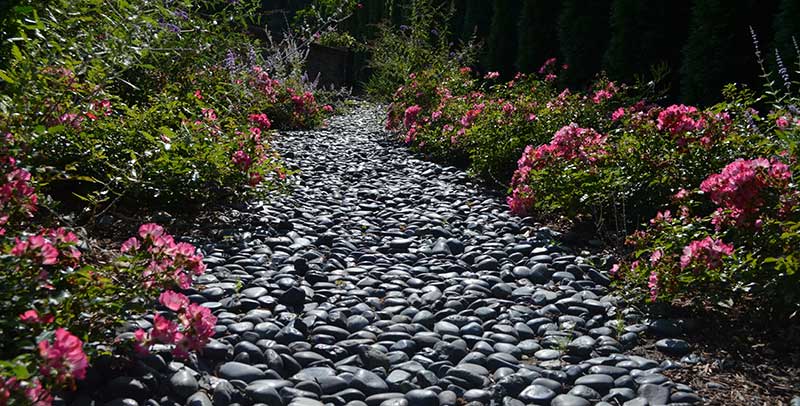
A Better Future for All
Recent natural events have shined a spotlight on the need to incorporate pervious products into property development.
We know you love your home and love your hometown. You can help keep its residents safe and its waterways healthy by making pervious products a part of your next outdoor project.
At Sponzilli, we specialize in working with pervious materials. And we always make it our business to know the regulations of the town we are working in. That way, there are no nasty surprises for the homeowner after we complete the project. Contact us to learn about our sophisticated and luxurious landscaping options that will truly turn your home into your favorite retreat.

